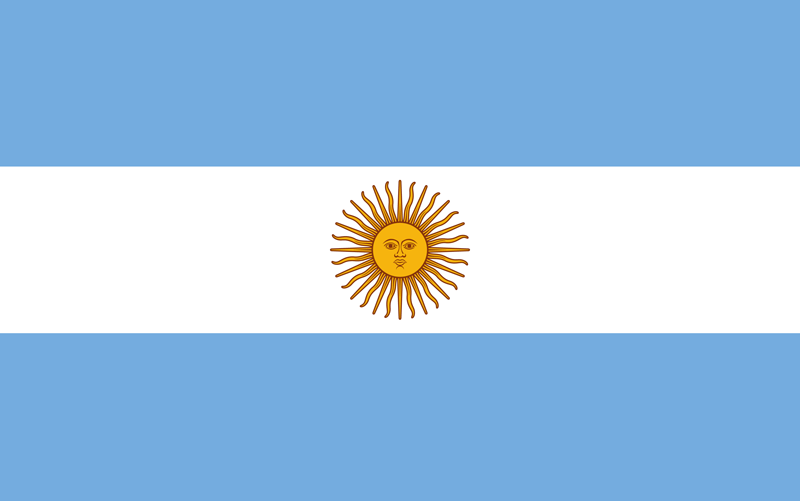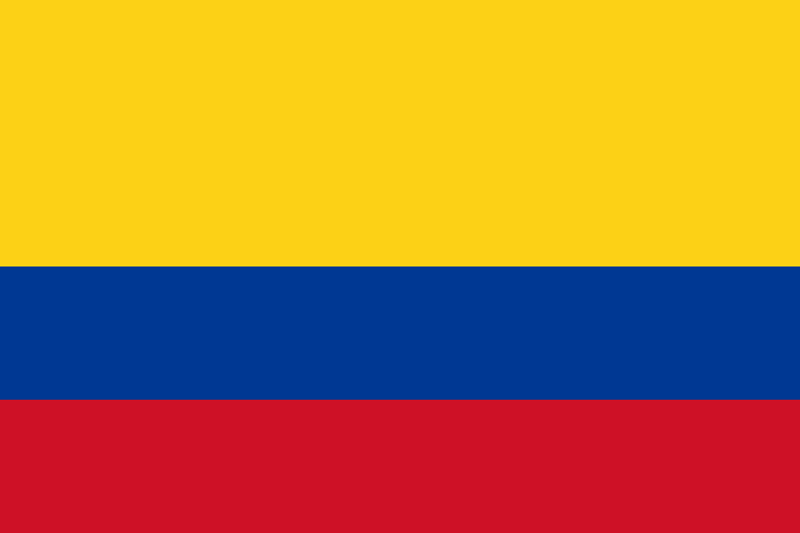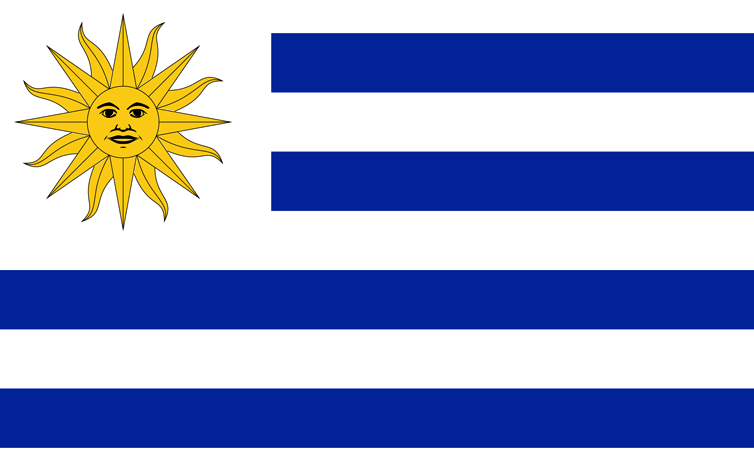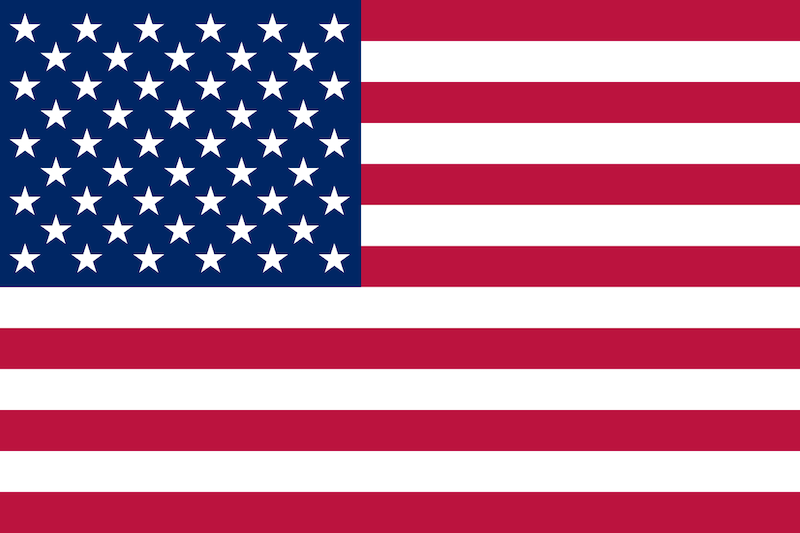LUCHAR JUNTO A LOS MOLINOS DE VIENTO
- 23 de agosto de 2015
[tp lang=»es» not_in=»en»]Entrevista de la revista Seisgrados al Ing. Francis Raquet, Socio y Director Comercial de Ventus.
A los 32 años, es uno de los tres socios de Ventus, empresa pionera en energía eólica en Uruguay. En charla con Seisgrados, este ingeniero industrial que eligió la carrera por descarte cuenta cómo se metió en el mundo de las energías renovables y encontró un nicho innovador que, además de su arista ecológica, puede ser un gran negocio
a mano se desliza rápidamente sobre una hoja de papel. “Me resulta más fácil explicártelo con gráficas”, justifica Francis Raquet sentado en su escritorio mientras garabatea algunas líneas. Minutos después, también una aplicación del celular o la pantalla de la computadora le resul- tarán útiles para ilustrar conceptos. Son gajes de la profesión para este ingeniero industrial que se aboca a hablar de su vida personal, del surgimiento de la empresa Ventus y de la energía eólica en Uruguay; tres historias que son una al mismo tiempo.
La conversación tiene lugar en las oficinas de Ventus, en el décimo piso de un edificio en Parque Rodó, un espacio con inmejorable vista a la rambla montevideana donde se amontonan escritorios y empleados. El rincón de Raquet tiene vida propia: anotaciones por doquier, papeles pegados en las paredes,bocetos sobre instalaciones en funciona- miento y proyectos en construcción. En medio de ese caos con orden se destacan el cuadro de un molino de viento y una obra artística familiar: las huellas de unas manos pequeñas dedicadas al “mejor papá del mundo”. Es que el ingeniero, casado con Stephanie Delay, tiene dos hijas y aguarda a su tercer heredero, ya en camino.
Pero no solo la familia está en expansión. La pared guarda lugar para más obras y más proyectos. En eso está Ventus luego de convertirse en la empresa privada pionera en energía eólica en Uruguay y de tener hoy, con menos de un lustro de vida, cuatro parques eólicos operativos y otros ocho en construcción, totalizando para 2016 negocios por casi 200 millones de dólares.
El mundo de las energías renovables es relativamente nuevo en el país y también lo es para el propio Raquet, que en su época de estudiante ni siquiera estaba seguro de cursar ingeniería. Desoyendo el consejo recibido por un psicólogo especialista en orientación vocacional, eligió la carrera por descarte y pragma- tismo. “Soy malísimo para las matemáticas, pero en el 2000 la carrera de ingeniería tenía mucha salida laboral y abría puertas”, confiesa sin temor, al tiempo que asegura que luego se terminaría enamorando de su profesión.
Mientras estudiaba en la Universidad de Montevideo, comenzó a trabajar de cadete en Engraw, la compañía que su familia posee desde hace más de siete décadas. De hecho, el ingeniero hace gala de sus conocimientos en la industria textil, que prácticamente le corren por las venas, aunque aclara que actualmente está “oxidado” en el área. Lo cierto es que con una fábrica en Fray Marcos (Florida) y oficinas en la capital, esta empresa se ubica como la segunda lanera del país, al exportar siete millones de kilos de top anuales. Avanzado en la carrera, pasó a trabajar en mantenimiento, bajo las órdenes del ingeniero de planta. Fue entonces que notó el altísimo costo que tenía el consumo de energía eléctrica para la empresa —de 2002 a 2012 había subido 300% en dólares— y se embarcó en analizar cómo bajarlo.UNA LOCURA POSIBLE
Se contactó así con Juan Pablo Saltre y Miguel Causa, excompa- ñero de facultad y exprofesor respectivamente, quienes habían trabajado juntos en la instalación de Kentilux, el primer parque eólico privado de una licitación de UTE, y quienes a partir de esa experiencia habían fundado un emprendimiento propio: Ventus.
Corría el 2010 y la idea de Raquet sona- ba a locura; instalar un aerogenerador (molino) en la fábrica para tratar de bajar el consumo era algo que no tenía antecedentes. Pero el primogénito de la familia —son ocho hermanos, incluyendo una “hermana postiza”— no tuvo problemas en convencer a todos de que su iniciativa tenía potencial. “La ignorancia y la inocencia nos jugaron a favor, porque todo el mundo nos decía que estábamos locos, que era inviable, que no era económicamente rentable”, recuerda. Y los números sustentaban ese pesimismo: instalar un molino requiere una inversión cercana a los 4 millones de dólares. Casi la mitad de ese costo corresponde solo a la com- pra del aerogenerador; el resto incluye traslado, montaje, obras viales, civiles y eléctricas. Para peor, “si el tema eólico aún está verde en Uruguay, estaba muchísimo más verde en esa época”, recuerda el ingeniero.
Sin embargo, la locura se hizo realidad y ese molino se convirtió en el primero instalado en una fábrica en Latinoamérica. Engraw fue además miembro pionero de la certificación WindMade, que se otorga a empresas que utilizan energía eólica. De hecho, la satis- facción fue tal que un año después la compañía decidió instalar un segundo molino en la planta.
¿Cómo terminó siendo económicamente viable semejante inversión para una empresa de 120 empleados? Para empezar, Engraw pagaba entre 600 y 700 mil dólares al año de energía eléctrica y pasó a pagar menos de la mitad. Hoy el 60% de la energía utilizada en la fábrica proviene del aerogenerador. “Ahí ya hubo una reducción muy importante. Y lo otro, que fue lo que más pesó, es la ley de promoción de inversiones que exonera impuestos a iniciativas de este tipo y funciona muy bien. Eso ayudó muchísimo a tomar la decisión. Y fue la razón por la que luego recibiríamos muchos más proyectos”. Todo esto llevó a que la inversión se pagara sola a lo largo de cuatro a cinco años.
Para cuando Engraw instaló el segundo molino, Raquet estaba del otro lado de la mesa. “Había pasado tan bien y me había parecido tan interesante la experiencia que me uní a Ventus”, cuenta quien se convirtió en el tercer socio del emprendimiento.
energía Limpia y barata
Cuando brinda datos, con tono casi didáctico, el empresario relaja el semblante. Siempre amable, se lo intuye introvertido. Es escueto para hablar de su vida personal y se lo nota decididamente más a gusto si la conversación gira sobre los proyectos de Ventus, lo que están haciendo y en particular lo que desean hacer. Pero, antes de ello, continúa con la breve retrospectiva.
Luego de la experiencia de Engraw, ya con Raquet como flamante parte del equipo, la novel empresa descubrió que era posible expandir lo hecho como modelo de negocio y replicó la iniciativa con otra fábrica. La acumulación de éxitos detonó el siguiente proyecto: Ventus decidió tener un molino propio, no para autoconsumo, sino para vender energía al mercado. Ese fue el puntapié del parque eólico Libertad, que hoy tiene cuatro aerogeneradores.
En este punto, vale la pena aclarar que la energía eólica tiene dos ventajas fundamentales: es amigable con el medioambiente y es barata.
Para ilustrarlo, Raquet vuelve a los recursos gráficos: ingresa al sitio web de la ADME, el ente que regula el mercado eléctrico en Uruguay, y señala la pantalla de la computadora. “La ADME tiene todos los generadores a su disposición para satisfacer la demanda de todo el país. Los va activando según la necesidad, con una regla: desde el más barato hasta el más caro. La energía eólica es la más barata y siempre está prendida. Luego están la represa de Salto Grande; las centrales Palmar, Baygorria y Terra; Motores, que utiliza gasoil, o Punta del Tigre, que funciona a gas, entre otros. El último generador activado es el que marca el llamado ‘precio spot’. Entonces, la energía eólica es espectacular, porque, si no estuviera, yo debería tener a Punta del Tigre prendido todo el tiempo, y si tengo una seca importante, tendría que importar energía de Argentina o Brasil, que me van a vender al doble de precio”.
energía en construcción
El ingeniero admite que, mientras el 2014 fue “espectacular”, el panorama cambió en el correr de este año. La desaceleración de la economía, la baja en el precio del petróleo, la sequía y el cam- bio de gobierno han llevado a que las empresas se muestren más cautelosas a la hora de invertir. Eso, sumado a que el país “ya tiene su cupo de energía eólica” casi completo, hacen que Ventus empiece a mirar fuera de fronteras. “Somos una empresa joven y queremos aprovechar todo el conocimiento adquirido trabajando para afuera. Nos especiali- zamos en desarrollar, construir y operar parques eólicos en Uruguay, donde el mercado se redujo mucho”, dice Raquet.
Perú, Bolivia, Argentina y Panamá son los des- tinos posibles para nuevos proyectos. Ventus se ha presentado a licitaciones en los dos primeros y tiene en vista a Argentina, donde asegura que “la demanda es impresionante”, pero las condi- ciones económico-políticas actuales obstaculizan nuevas inversiones. “Eso va a cambiar y queremos estar preparados para cuando pase”, apunta. En cuanto a Panamá, los socios participaron de una feria eólica en julio y tienen proyectos en vista. “Queremos hacer lo mismo que en Uruguay: para desarrollar el parque Ventus I, de 10 MW, fuimos a los corredores de Bolsa y juntamos 20 millones de dólares con inversores uruguayos de pequeño y gran porte. Eso mismo queremos hacer en Panamá, con inversores panameños y uruguayos”.
En todos estos países ya hay jugadores importan- tes en energía eólica, pero Raquet asegura que, aunque su empresa es “microscópica” al lado de los más grandes en esta industria, cuentan con la confianza para competir de igual a igual. “Nuestro interés en esos mercados no es hacer una ganancia diferencial, sino mantenernos en este negocio, generar oportunidades, entonces igual lo hacemos al costo. Estamos confiados en que puedan surgir oportunidades en estos lugares”.La arista medioambiental también seduce a la hora de vender la energía eólica como producto. “La gente no es ajena a los fenó- menos climáticos que vienen pasando en los últimos años, hay una crisis de agua tremenda en los últimos seis meses, el año pasado llovió como no llovía en décadas… Es vox populi que hay cambio climático y Uruguay es un país renovable”, dice Raquet, aunque confiesa que, al momento de decidirse a invertir en un molino, para una empresa pesa más el factor económico que la conciencia ecológica.
UN UNIVERSO FINITO
Más allá de los indiscutibles beneficios de la energía eólica, vale resaltar que en ningún caso se puede depender 100% de esta fuente. La variabilidad del viento hace que siempre haya que estar conec- tado a la red de UTE. El silogismo es simple: si no hay viento, el aspa no se mueve; si el aspa no se mueve, no se produce energía. De depender solo del molino, la luz se pasaría titilando. “La base siempre tiene que ser firme; en una represa tirás agua y eso gene- ra 50 MW estables. En la eólica, la potencia sube y baja según el viento”. Además, la energía generada no se puede almacenar. Por eso mismo, la cantidad de parques eólicos necesarios es limitada. Actualmente, el país del mundo con mayor porcentaje de energía eólica en su oferta energética es Dinamarca. Se estima que para 2016Uruguay lo igualará, con entre 25% y 30%. Si la energía proveniente del viento supera el 30%, se complicaría el manejo de las redes, explica Raquet. “La energía eólica o solar tiene que ser marginal para que la base sea estable. Acá creció mucho en los últimos tres años: el país pasó de tener 50 MW a tener 500 MW, y el año que viene va a superar los 1.000. Pusimos tanta energía eólica que la ADME no sabe cómo lo va a manejar; se están capacitando para eso”. Ventus tiene hoy cuatro parques operativos, por un total de 30,5 MW, que están ahora mismo entregando energía a la red. Además posee otros ocho parques en construcción, por 65 MW; tres comenzarán a operar este año y los otros cinco en 2016. A excepción de un aerogenerador para autoconsumo de un frigo- rífico, todos obedecen a inversiones de empresas nacionales de distintos rubros —vestimenta, comida, transporte, etcétera— que adquirieron un molino cada uno para vender la energía producida. “Apuntamos a empresas que podían invertir los cuatro millones de dólares necesarios y diversificaron su giro. Muchos están con el tema ambiental presente y les interesó la idea”, cuenta Raquet. Con esa compra, cada empresa obtiene además los beneficios tributarios estipulados en la ley de promoción de inversiones. Para 2016, Uruguay tendrá más 1.000 MW de potencia provenientes de la energía eólica; 100 MW serán de parques construidos y operados por Ventus. La energía eólica ya no es el futuro sino el presente y, Raquet lo sabe, llegó para quedarse.
[/tp]
[tp lang=»en» not_in=»es»]
Interview on Seisgrados magazine to Eng. Frances Raquet, Partner and Commercial Director of Ventus.
At 32 years old, he is one of the three partners of Ventus, pioneer company on wind power in Uruguay. Chatting with Seisgrados, this industrial engineer who chose his major by process of elimination, tells us how he got into the world of renewable energy and found an innovation gap which, apart from having an ecological aspect can be a good business.
A sheet of paper is quickly slid by hand. ‘It’s easier for me to describe it with graphs’, justifies Francis Raquet, sitting at his desk while he scribbles some lines. Minutes later, an application either on his cell or the computer screen seem useful to illustrate some concepts. It’s all part and parcel of his job as an industrial engineer who focuses on speaking about his personal life, the beginnings of Ventus company and about wind power in Uruguay; three stories in one.
The conversation takes place at Ventus headquarters, on the tenth floor of a building in Parque Rodó, a place with an unbeatable view to Montevideo’s promenade where desks and employees are crammed into. Raquet’s corner has a life of its own: notes all over the place, papers glued to the walls, sketches of working installations and projects under construction. In the middle of that organized chaos a picture of a wind turbine and a family work of art with stands out: two small hand prints dedicated to ‘the best dad in the world’.
It’s that the engineer, married to Stephanie Delay, has two daughters and he is expecting a third heir, on his way.
But the family is not the only expanding thing. The wall has more space for more works and projects. That is what Ventus is working on, after becoming the pioneer private wind power company in Uruguay and having today, with less than five years of existence, four operating wind farms and eight under construction, adding a total of almost 200 million dollars in businesses by 2016.
The world of renewable energy is relatively new in this country as it is for Raquet himself, who in his college days was not even certain about studying engineering. Disobeying the advice given by a psychologist specialized in vocational guidance, he chose his major by process of elimination and pragmatism. ‘I’m awful at mathematics, but in the year 2000 studying engineering gave you good career opportunities and opened doors’, confesses fearlessly, while he claims that later on he would fall in love with his profession.
While studying at the University of Montevideo, he started working as a currier for Engraw, the business his family has had for over seven decades. As a matter of fact, the engineer brags about his knowledge on the textile industry, which he practically has in his genes although he states he is now a little “rusty” in the area. The fact is that with a factory in Fray Marcos (Florida) and headquarters in the capital city, this company is positioned as the second most important wool manufacturer in the country, since its exports reach seven million kilos of annual wool top. Later on in his studies, he started working on maintenance, under the engineer in charge of the plant. It was then when he realized the consumption cost of electrical power was highly expensive for the company-from 2002 to 2012 it had risen by 300% in dollars- and he started doing research on how to lower it.
A POSSIBLE MADNESS
He therefore got in touch with Juan Pablo Saltre and Miguel Causa, former college classmate and professor, who had worked together on the installation of Kentilux, the first private wind farm of an UTE tender, and who, based on that experience, had started their own entrepreneurship: Ventus.By 2010 Raquet’s idea seemed madness; installing a wind turbine in the factory to try to lower the consumption was unprecedented. However, the first-born of the family – they are eight siblings, including a “step-sister” – didn’t find it difficult to convince everyone about the initiative’s potential. “Ignorance and innocence worked in our favor, because everyone was saying we were crazy, that it was unfeasible, that it was financially unprofitable”, he recalls. Furthermore, figures supported that pessimism: installing a wind turbine requires an investment of about 4 million dollars. Almost half of that cost corresponds only to the purchase of the wind turbine; the rest includes logistics, assembly, road works, civil and electrical. To make matters worse, “assuming that the wind power issue is still today in the early stages, back then it was much worse”, recalls the engineer.
However, that madness came true and that wind turbine became the first one installed in a factory in Latinamerica. Besides, Engraw was pioneer member of the WindMade certification, which is given to companies that use wind power. As a matter of fact, it was so rewarding that a year later the company decided to install a second wind turbine in the plant.
How did such investment end up being financially feasible for a 120-employee company? For starters, Engraw was paying between 600 and 700 thousand dollars per year for electrical power and so they managed to halve its costs. Nowadays, 60% of the energy used in the factory comes from a wind turbine. ‘There was an important cost cutting. And most importantly, there was a new investments promotion law which exempts tax to initiatives of this kind and it works really well. That helped a lot in the decision-making, and it was the reason why we later on would receive many other projects.’ All of this led to the investment paying itself off within four or five years.By the time Engraw installed the second wind turbine, Raquet was at the other side of the table. “I had had such a great time and it had been such an interesting experience that I joined Ventus”, says the man who became the third partner of the entrepreneurship. Clean and cheap energy.
When he provides information, with a sort of educational tone of voice, the businessman looks more relaxed. Always kind, he seems introvert. He doesn’t like talking about his personal life and he seems more at ease when the conversation revolves around Ventus’ projects, what they are doing, and more specifically what they are planning to do; but before that, he goes on about his brief retrospective.
After the experience with Engraw, when Raquet had already become essential part of the team, the novice company realized it was possible to expand what had been done as a business prototype and replicated the initiative with another factory. The accumulation of successes led to the following project: Ventus decided to have a wind turbine of its own, not for their own consumption but to sell energy to the market. That was the kick-start of Libertad wind farm, which today has four wind turbines.
At this point, it is worth mentioning that wind power has two fundamental advantages: it is environmentally friendly and cheap.
In order to illustrate this, Raquet goes back to the graphics: he enters ADME’s website, the Uruguayan market regulatory agency, and points at the computer’s screen. “ADME has all its wind turbines at its disposal to cover the demand of all the country. They activate them as needed, with one rule in mind: from the cheapest to the most expensive. The wind power is the cheapest energy and is always working. Second is Salto Grande’s dam; Palmar central, Baygorria and Terra; Motores, which runs on gas oil, or Punta del Tigre, which runs on gas, among others. The latest generator activated is the one which sets the so called ‘spot price’. Therefore, wind power is spectacular, because, if it didn’t exist, I would have to go to Punta del Tigre turned on all the time and if there is an important drought, I would have to import energy from Argentina or Brazil, both of whom will sell at twice the price”.ENERGY UNDER CONSTRUCTION
The engineer admits that, during 2014 it was “spectacular”, there was a complete shift in the scene. The economy slowed down, there was a decline in the price of oil. Also, the drought and the change of government have led to companies being more cautious at the moment of investing. This, added to the fact that the country “already has its capacity of wind power” almost at its fullest, made Ventus to look abroad. “We are a young company and we want to make the most of the acquired knowledge working offshore. We specialize in developing, building and operating wind farms in Uruguay, where the market has shrunk a lot”, claims Raquet.
Peru, Bolivia, Argentina and Panama are possible markets for new projects. Ventus has applied for tenders in the first two and is looking at Argentina, where it assures that “the demand is extraordinary”, but the financial-political conditions at the moment hinder our investments. “This is going to change and we want to be ready for when that happens”, he points. As for Panama, the partners have taken part in the wind power fair in July and have projects in sight. “We want to do the same as in Uruguay: to develop Ventus I wind farm, of 10 MW, we were the stock brokers and raised 20 million dollars with both small and large scale Uruguayan investors. We want to do the same in Panama, with Uruguayan and Panamanian investors”.In every country there are existing wind power actors, but Raquet assures that, although their company is “microscopic” compared to the bigger ones in the industry, they are confident that they can compete head to head. “Our interest in those markets is not to make a profit, but to be able to stay in business, make opportunities, so we offer it at cost price. We are confident that opportunities will arise in other places”.
The environmental aspect is also attractive when selling wind power as a product. “People are aware of the climate phenomena that have happened over the last few years, there has been a tremendous water crisis over the last six months, last year it rained like it hadn’t rained in decades… The fact that the climate change is real is vox pop and Uruguay is a renewable country”, says Raquet, although he confesses that, when a company has to decide whether or not to invest in a wind turbine, companies prioritize the financial factor over the ecological awareness.
A FINITE UNIVERSE
In addition to the unquestionable benefits of wind power, it is worth pointing out that in no case we can depend 100% on this source. The variability of wind requires that we are always connected to the UTE grid. The syllogism is simple: if there is no wind, the arm does not move; if the arm does not move, the power is not generated. If we depended only on the wind turbine; light would flicker. “The supply always has to be strong; in a dam you throw water and that generates 50 consistent MW. Whereas for the wind power, it goes up and down according to the air flow. Moreover, the power generated can not be stored. That is why, the number of wind farms needed is limited. Currently, the country with the highest percentage of wind power in the world is Denmark. It is estimated that by 2016 Uruguay will match them, with a proportion of between 25% and 30%. If the wind power surpasses 30%, managing the grid would become complicated, explains Raquet. “Both Wind and Solar power has to be marginal so that the supply is consistent. Here, it has grown significantly over the last three years: the country went from having 50 MW to having 500MW, and next year it will surpass 1000. We have supplied so much wind power that ADME does not know how it will handle it; they are getting training on that”. Today Ventus has four operative wind farms, adding up to a total of 30,5 MW which are supplying power to the grid at this very moment. Furthermore, they own another eight farms under construction, of 65MW; three of the which will start working this year and the other three in 2016. With the exception of one wind turbine which is used for a cold-storage plant’s own consumption, all of them correspond to investments of national companies from different industries – clothing, catering, transport, etc – which have acquired one wind turbine each to sell generated power. “We aimed at companies which could invest the necessary four million dollars and diversified their range. Many of them have the environmental issue in mind”, says Raquet. With that purchase, each company deducts taxes according to the law which promotes investments. By 2016, Uruguay will have another 1000 MW of power coming from wind power; 100 MW will come from wind farms built and operated by Ventus. Wind power is no longer the future but the present and Raquet is well aware of that, it’s here to stay.
Download original in PDF
[/tp]





